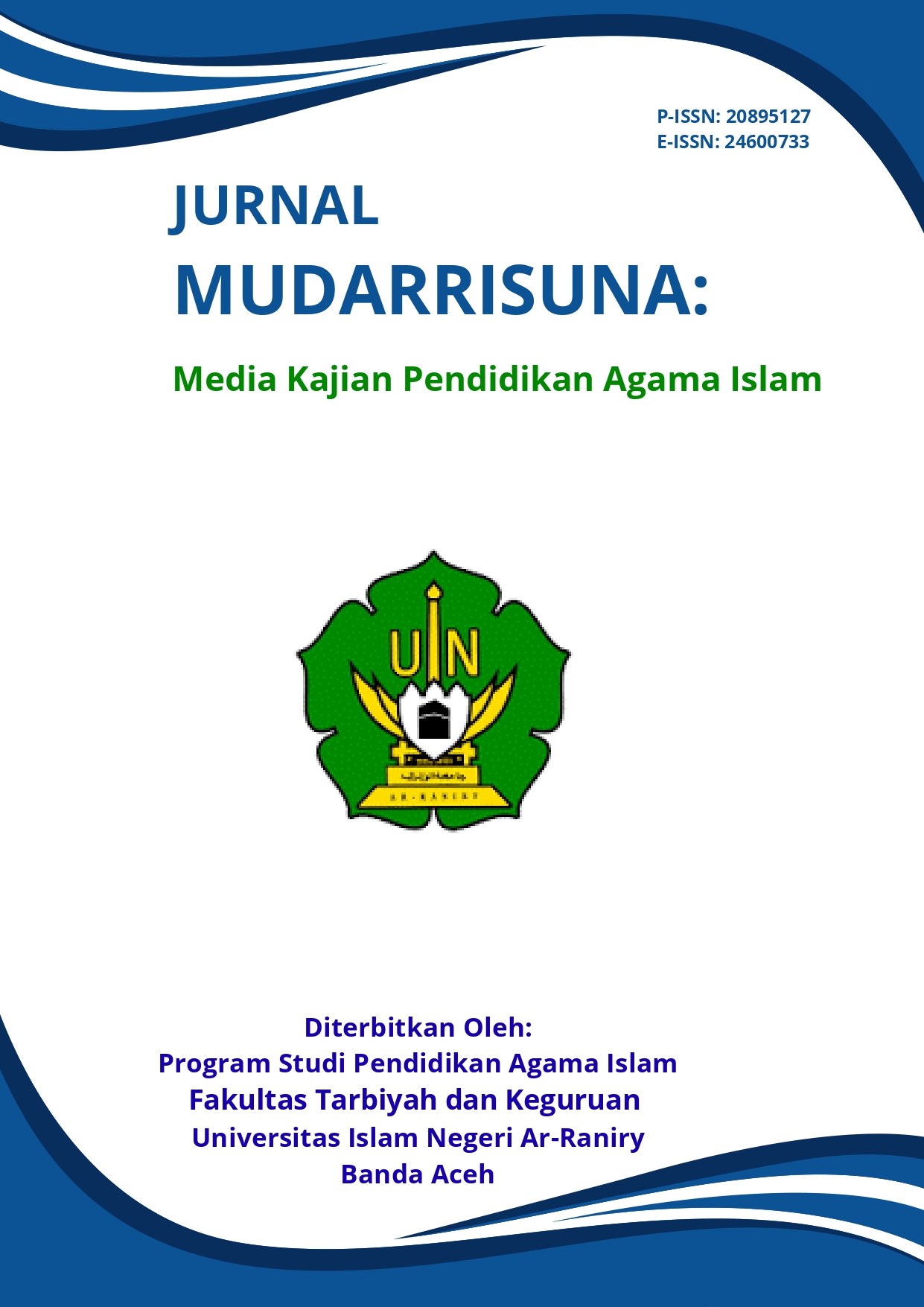Kreativitas Guru PAI Dalam Meningkatkan Pembelajaran Agama Di SMP Negeri 1 Darussalam Aceh Besar
DOI:
https://doi.org/10.22373/jm.v14i1.23653Keywords:
Kreativitas, Guru PAI, Pembelajaran Agama.Abstract
Teachers have a very big role, both in improving the quality of education and developing students' interest in learning. Thus, teachers must be creative in teaching so that the learning objectives are achieved well. In this research, the problem is how to plan creativity in teaching, implement methods and models as well as supporting and inhibiting factors for developing religious teacher creativity in student learning at SMP Negeri 1 Darussalam Aceh Besar. This research uses an analytical description method with the type of field research and is supported by references related to the themes discussed in this thesis (library research). The subjects of this research were class II students at SMP Negeri 1 Darussalam Kab. Aceh Besar. The data collection technique used was interviews assisted by observation and documentation. Based on the results of research in the field, it shows that the religion teacher at SMP Negeri 1 Darussalam before the learning process carried out MGMP and formulated learning objectives, chose books that had a high weight, the implementation used relevant teaching methods and media to stimulate students' thinking power, apart from that the teacher utilize the learning media available at school and also create your own learning media. Thus, the methods and materials of religious teachers in improving student learning achievement are quite optimal and also religious teachers have sufficient creativity in the teaching and learning process.
References
Ahmad Ghifari Tetambe. 2021. Kreativitas Guru Pendidikan Agama Islam Dalam Mengembangkan Media Pembelajaran Berbasis ICT, ZAWIYAH: Jurnal Pemikiran Islam, Vol. 7, No. 1.
Elli. 2020. Kreativitas Guru Dalam Pembelajaran Agama Islam Di Smp Negeri 2 Manuju Kabupaten Gowa, JURNAL PILAR: Jurnal Kajian Islam Kontemporer, Vol. 11, No. 1.
Haekal, Dkk., 2022. Principal Policy Analysis in The Management of Distance Learning in The Covid-19. AL-TANZIM: Jurnal Manajemen Pendidikan Islam, Vol. 6, No. 1.
Husnul Amin, Dkk., 2021. Membangun Kreativitas Guru Mata Pelajaranpendidikan Agama Islam (Pai): Suatu Kajianpustaka, RAUDHAH PROUD TO BE PROFESIONAL: Journal Tarbiyah Islamiyah, Vol. 6, No. 1.
Mulyasa. 2018, Menjadi Kepala Sekolah Profesional, Edisi Revisi, Bandung: PT Remaja Rosdakarya.
Rulitawati, Dkk. 2023. Kreativitas Guru Agama Islam Dalam Meningkatkan Kualitas Pendidikan Agama Islam di SMP IT Ishlahul Ummah Prabumulih, RAUDHAH Proud to Be Professionals Jurnal Tarbiyah Islamiyah, Vol. 8. No. 1.
Suhendra, Dkk. 2021. Pengaruh Kreativitas Guru Dalam Pembelajaran Daring Terhadap Hasil Belajar Siswa Pada Mata Pelajaran Pendidikan Agama Islam, Edukatif: Jurnal Ilmu Pendidikan, Vol. 3, No. 4.
Sulaiman Ismail & Sulaiman W. 2023. Pembinaan Pendidikan Islam Bagi Calon Pengantin Melalui Kursus CATIN. EDUKATIF: JURNAL ILMU PENDIDIKAN, Vol. 5. No. 1.
Downloads
Published
Issue
Section
License
Jurnal MUDARRISUNA: Media Kajian Pendidikan Agama Islam allows the author(s) to hold the copyright and to retain the publishing rights without restrictions. Authors who publish in this journal agree to the following terms:
- Authors retain copyright and grant the journal right of first publication with the work simultaneously licensed under a Creative Commons Attribution-ShareAlike 4.0 International License that allows others to share the work with an acknowledgment of the work's authorship and initial publication in this journal.
- Authors are able to enter into separate, additional contractual arrangements for the non-exclusive distribution of the journal's published version of the work (e.g., post it to an institutional repository or publish it in a book), with an acknowledgment of its initial publication in this journal.
- Authors are permitted and encouraged to post their work online (e.g., in institutional repositories or on their website) prior to and during the submission process, as it can lead to productive exchanges, as well as earlier and greater citation of published work.




